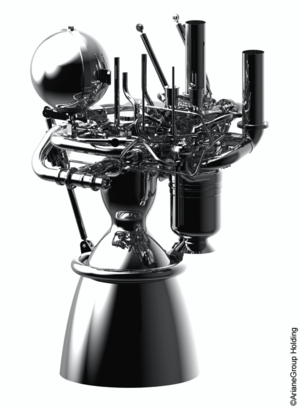Accept all cookies Accept only essential cookies See our Cookie Notice

About ESA
The European Space Agency (ESA) is Europe’s gateway to space. Its mission is to shape the development of Europe’s space capability and ensure that investment in space continues to deliver benefits to the citizens of Europe and the world.
Highlights
ESA - United space in Europe
This is ESA ESA facts Member States & Cooperating States Funding Director General Top management For Member State Delegations European vision European Space Policy ESA & EU Space Councils Responsibility & Sustainability Annual Report Calendar of meetings Corporate newsEstablishments & sites
ESA Headquarters ESA ESTEC ESA ESOC ESA ESRIN ESA EAC ESA ESAC Europe's Spaceport ESA ESEC ESA ECSAT Brussels Office Washington OfficeWorking with ESA
Business with ESA ESA Commercialisation Gateway Law at ESA Careers Cyber resilience at ESA IT at ESA Newsroom Partnerships Merchandising Licence Education Open Space Innovation Platform Integrity and Reporting Administrative Tribunal Health and SafetyMore about ESA
History ESA Historical Archives Exhibitions Publications Art & Culture ESA Merchandise Kids Diversity ESA Brand Centre ESA ChampionsLatest
Space in Member States
Find out more about space activities in our 23 Member States, and understand how ESA works together with their national agencies, institutions and organisations.
Science & Exploration
Exploring our Solar System and unlocking the secrets of the Universe
Go to topicAstronauts
Missions
Juice Euclid Webb Solar Orbiter BepiColombo Gaia ExoMars Cheops Exoplanet missions More missionsActivities
International Space Station Orion service module Gateway Concordia Caves & Pangaea BenefitsLatest
Space Safety
Protecting life and infrastructure on Earth and in orbit
Go to topicAsteroids
Asteroids and Planetary Defence Asteroid danger explained Flyeye telescope: asteroid detection Hera mission: asteroid deflection Near-Earth Object Coordination CentreSpace junk
About space debris Space debris by the numbers Space Environment Report In space refuelling, refurbishing and removingSafety from space
Clean Space ecodesign Zero Debris Technologies Space for Earth Supporting Sustainable DevelopmentLatest
Applications
Using space to benefit citizens and meet future challenges on Earth
Go to topicObserving the Earth
Observing the Earth Future EO Copernicus Meteorology Space for our climate Satellite missionsCommercialisation
ESA Commercialisation Gateway Open Space Innovation Platform Business Incubation ESA Space SolutionsLatest
Enabling & Support
Making space accessible and developing the technologies for the future
Go to topicBuilding missions
Space Engineering and Technology Test centre Laboratories Concurrent Design Facility Preparing for the future Shaping the Future Discovery and Preparation Advanced Concepts TeamSpace transportation
Space Transportation Ariane Vega Space Rider Future space transportation Boost! Europe's Spaceport Launches from Europe's Spaceport from 2012Latest
News conference with ESA astronaut Thomas Pesquet
Thank you for liking
You have already liked this page, you can only like it once!
Replay of the news conference with ESA astronaut Thomas Pesquet held at the European Astronaut Centre on 12 November.
Thomas splashed down on Earth after 199 days in space on 8 November. After being helped out of the Crew Dragon Endeavour, just four days later and after a boat, helicopter and multiple aircraft rides, Thomas arrived at the European Astronaut Centre in Cologne, Germany.
A one-hour news conference was held at ESA’s astronaut centre on 12 November.
Programme:
• Welcome by ESA’s Director of Human and Robotic Exploration Dave Parker.
• Statement from ESA’s Director General Josef Aschbacher
• Presentation on ESA’s vision on the future of human and robotic space exploration
• Thomas Pesquet statement
• Questions and answers from press (in French)
Thomas flew to the International Space Station as part of Crew-2 alongside NASA astronauts Shane Kimbrough and Megan McArthur and JAXA astronaut Akihiko Hoshide.
During Thomas’ second mission to space, called Alpha, he broke many ESA spaceflight records including most time spent spacewalking and most time in space for any European. He also became the first French commander of the International Space Station, taking over the role from Aki.
In addition to supporting 200 investigations in space, including 40 European ones and 12 new experiments led by the French space agency CNES, Thomas saw seven spacecraft come and go, the 20-year old Pirs module leaving for good and the arrival of the Russian Nauka laboratory module with a very special passenger, the European Robotic Arm.
Back on Earth, Thomas will continue working with European researchers on experiments including Acoustic Diagnostics that looks into the impact of the Space Station environment on astronaut hearing, the TIME experiment that looks at whether astronauts judge time differently in space, and two experiments known as Grip and Grasp that look into the physiology behind eye-hand coordination and the role of gravity in regulating grip force, among others.
-
CREDIT
ESA - European Space Agency -
LICENCE
ESA Standard Licence
-
Closed captions available Captions and subtitles are available (automatically generated by YouTube) - select your language using the YouTube player controls. A non-YouTube version is available using the 'download' button above.
-
Live Footage
-
-
-
-
-
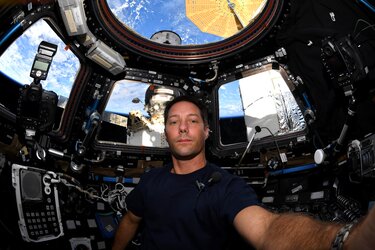
Thomas's selfie during Alpha mission
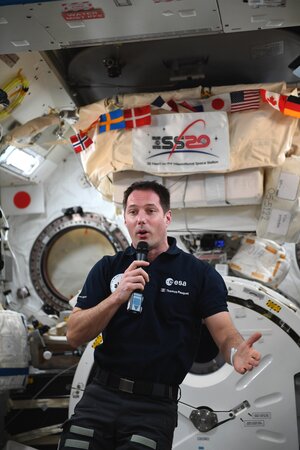
Thomas during event from Space Station
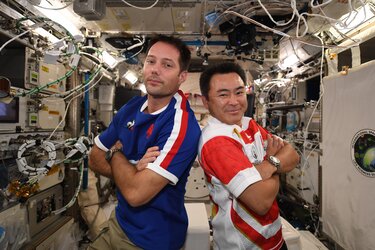
Thomas and Aki
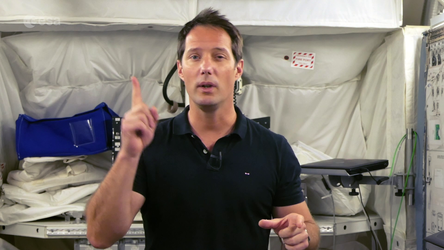
Back to school with Thomas Pesquet
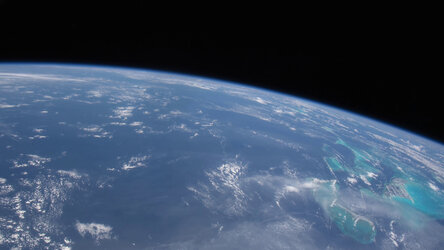














 Germany
Germany
 Austria
Austria
 Belgium
Belgium
 Denmark
Denmark
 Spain
Spain
 Estonia
Estonia
 Finland
Finland
 France
France
 Greece
Greece
 Hungary
Hungary
 Ireland
Ireland
 Italy
Italy
 Luxembourg
Luxembourg
 Norway
Norway
 The Netherlands
The Netherlands
 Poland
Poland
 Portugal
Portugal
 Czechia
Czechia
 Romania
Romania
 United Kingdom
United Kingdom
 Slovenia
Slovenia
 Sweden
Sweden
 Switzerland
Switzerland























